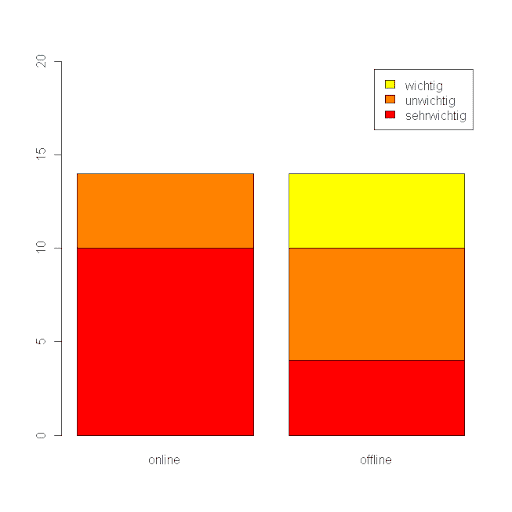Hello,
I want an stacked barplot, or at least two barplots (histogramms) of the data below. But I cant't figure out how. plot(online) is not the solution, I´m looking for. Please see below.
online offline
1 sehrwichtig wichtig
2 wichtig unwichtig
3 sehrwichtig unwichtig
4 sehrwichtig sehrwichtig
5 sehrwichtig sehrwichtig
6 sehrwichtig unwichtig
7 sehrwichtig unwichtig
8 wichtig wichtig
9 wichtig unwichtig
10 sehrwichtig sehrwichtig
11 sehrwichtig wichtig
12 sehrwichtig unwichtig
13 wichtig sehrwichtig
14 sehrwichtig wichtig
I know I need a step, where the data is aggregated to:
online offline
sehrwichtig 6 7
unwichtig 0 1
wichtig 3 5
But how?
